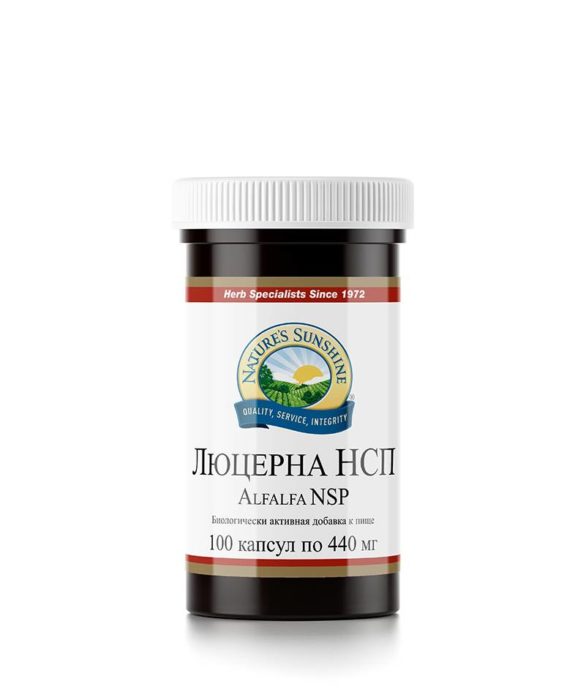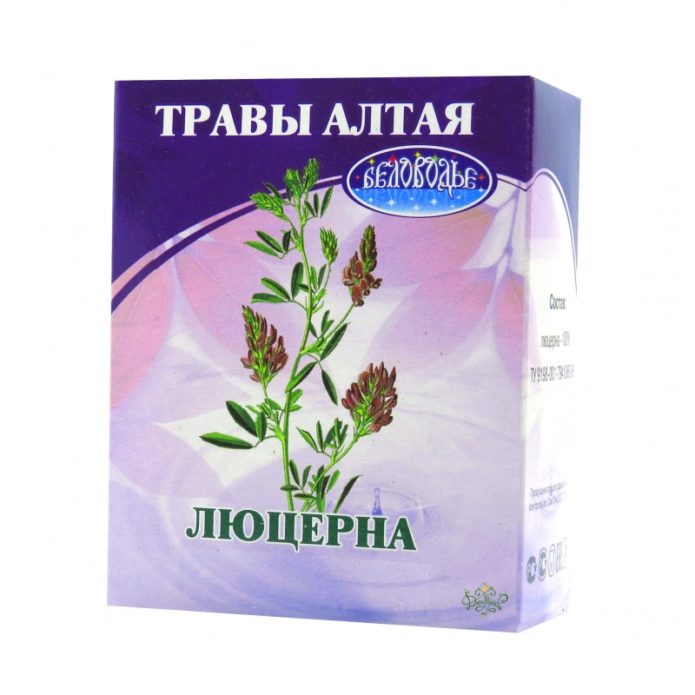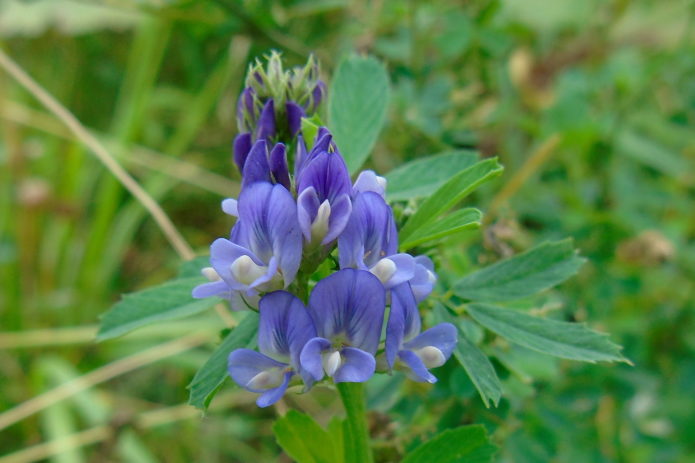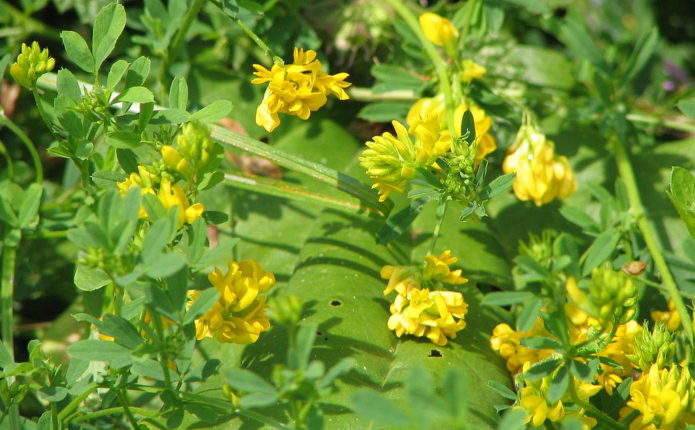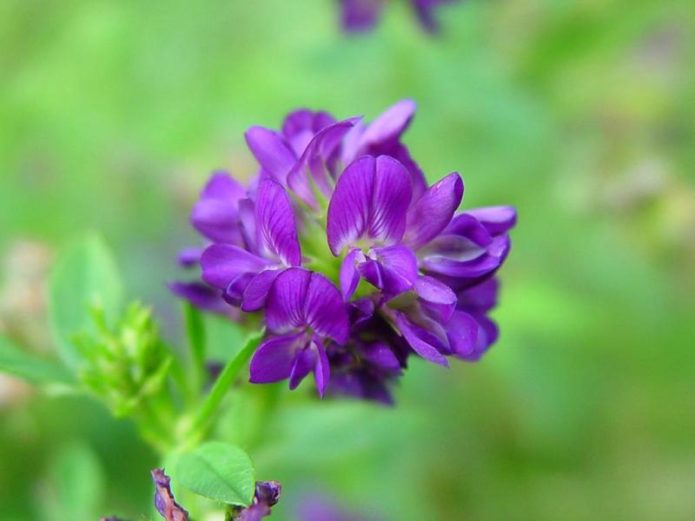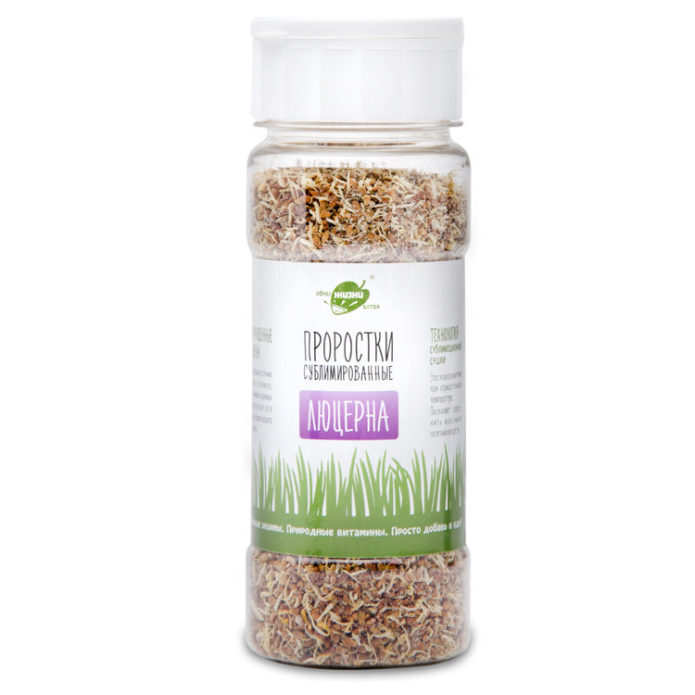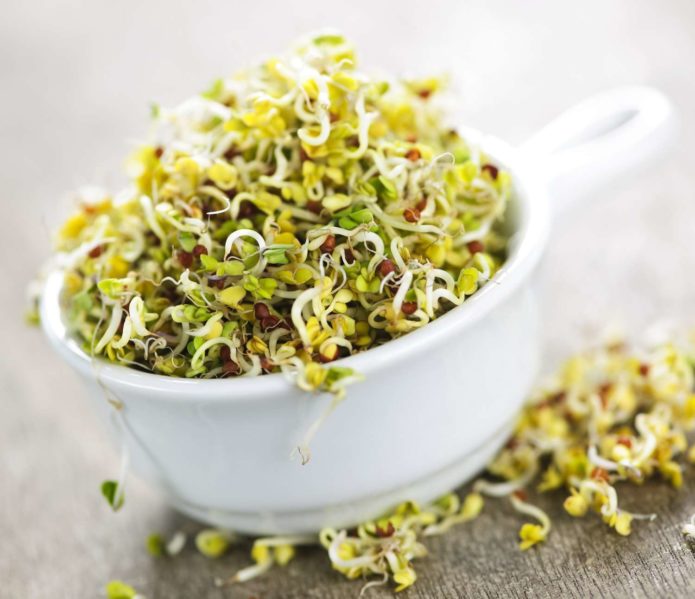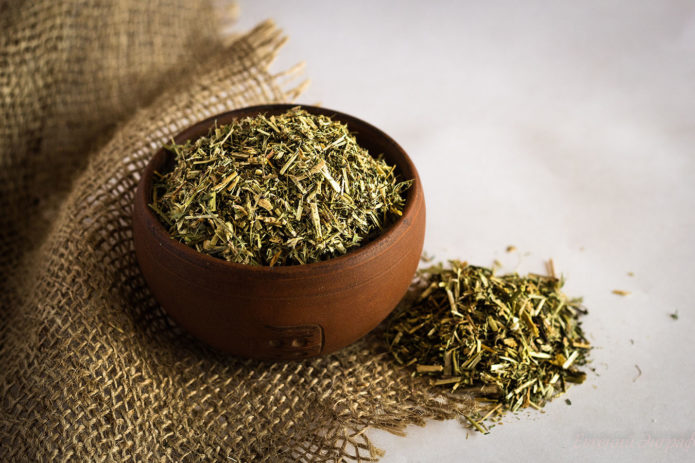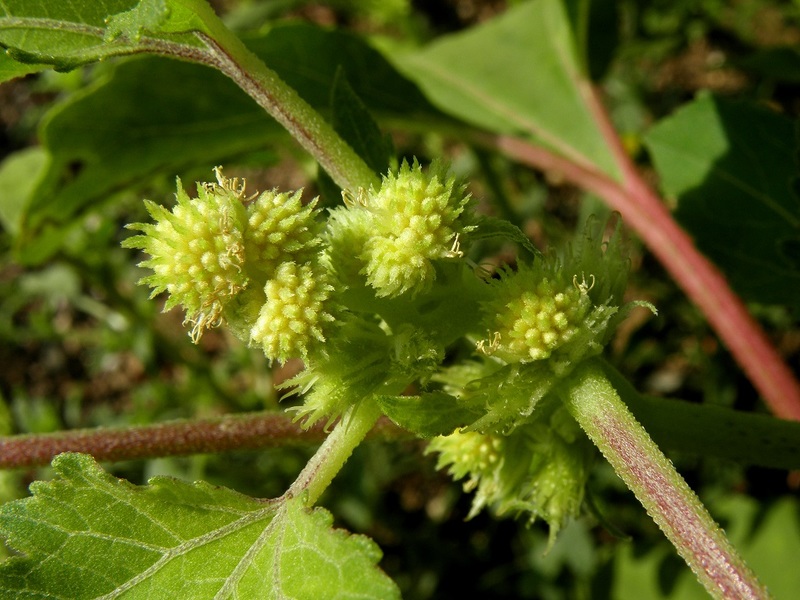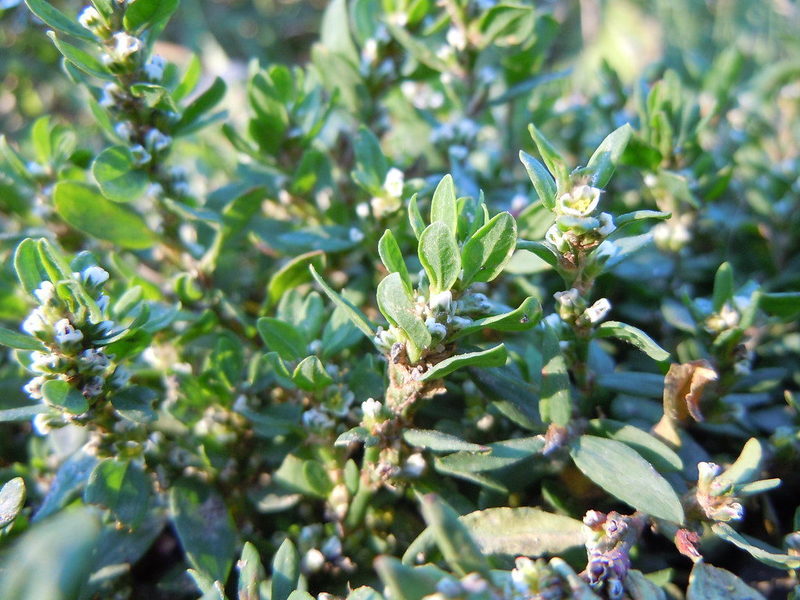Alfalfa is a herbaceous plant of the legume family. It is a forage herb and is also widely used in cooking and cosmetology. But this plant is most popular in folk medicine. Medicines based on the aerial part of the flower have a tonic effect and help in the treatment of many different diseases. Other health benefits of alfalfa are also popular.
Content
What alfalfa looks like: photo and description
Alfalfa is an annual or perennial with an erect stem, small oval leaves, and a powerful rhizome. Her flowering begins in the middle of the summer period and lasts until the beginning of autumn. Alfalfa blooms small flowers at this time, the shade of which depends on the type of plant. After the end of the flowering period, brown fruits appear, on the surface of which achenes are located.
Alfalfa is also known by names such as medunka, dawn, lechukha, vazil and burkunchik.
Alfalfa is one of the most popular medicinal plants used in traditional medicine for a long time. Biologically active additives, various decoctions, infusions and other medicinal products are made on the basis of the herb. But despite the many useful properties, medunka is not included in the State Register of Medicines of the Russian Federation.
Herbal raw materials for self-preparation of medicines can be bought at a pharmacy or collected in areas where alfalfa grows.
What varieties are used in traditional medicine
There are more than 100 varieties of this plant, but only 4 of them are used in folk medicine. The most popular species is alfalfa, or blue. Distinctive features of this variety are light fluff present on the stems and foliage, as well as blue or white flowers.
For the preparation of medicinal decoctions and infusions, hop alfalfa is also used. It can be recognized by its yellowish buds.
Crescent alfalfa, or yellow, is distinguished by its bright yellow flowers. It has a diuretic, tonic and calming effect, like the above varieties.
In folk medicine, alfalfa has also found its application. During flowering, lilac flowers appear.Unlike other species, this plant is rarely used.
Useful properties of alfalfa for the human body
Medunka has the following medicinal properties:
- pain reliever;
- diuretic;
- laxative;
- fortifying;
- cleansing;
- hemostatic;
- calming;
- antineoplastic;
- wound healing.
Regular use of alfalfa-based products also brings such benefits: it helps to normalize digestion, reduces blood cholesterol levels and the risk of blood clots.
Indications for use
It is recommended to use products made from alfalfa for the following diseases:
- cold;
- skin diseases;
- diabetes;
- hypertension;
- ischemia;
- diseases of the gastrointestinal tract;
- joint damage;
- tachycardia;
- chronic constipation;
- thyroid disease;
- cystitis and urethritis.
It is advisable for women to take decoctions and infusions during menopause in order to compensate for the lack of hormones. The seeds can be consumed while breastfeeding, as medications based on medicinal products increase lactation.
Contraindications, harm and side effects
List of contraindications for the use of medunka-based products:
- increased blood clotting;
- lupus erythematosus;
- individual intolerance;
- a stomach ulcer during an exacerbation;
- phenylketonuria;
- celiac disease, multiple sclerosis and other autoimmune diseases;
- children under 3 years old.
During pregnancy and lactation, only sprouted alfalfa seeds can be consumed.
Alfalfa-based products can cause the following side effects:
- indigestion;
- rashes on the skin;
- painful sensations in the stomach.
Long-term consumption of alfalfa leads to weight gain, as it contains a significant amount of fat-soluble substances. The optimal duration of the course of treatment is 8-12 weeks with a monthly break.
Popular recipes
The following medicines can be prepared on the basis of the aerial part of alfalfa:
- germinated seeds;
- cocktail;
- water infusion;
- broth;
- alcohol tincture;
- means for external use;
- decoction for baths;
- tea.
There is a large amount of fiber in the chemical composition of the lechukha and, so that the stomach can more easily perceive it, it is recommended to drink drugs with bifidobacteria before starting a course of treatment with any drug based on this plant. A specialist will help you choose the right medicine.
Germinated seeds
Alfalfa seeds can be sprouted on their own or purchased as freeze-dried sprouts, ready to eat. At home, seed germination is carried out as follows:
- The seeds are soaked in clean water for a day.
- The liquid is drained, and the seeds are laid out in a thin layer on a canvas fabric.
- The seeds are washed every 2 days in running water so that they do not grow moldy.
- After the green sprouts appear, the seeds are washed with water and a plastic container is placed.
Store sprouts in the refrigerator. They can be eaten neat or used as an addition to various salads and cocktails.
Video: how to germinate honeycomb seeds at home
Cocktail
Ingredient List:
- 100 g of alfalfa herb;
- 100 ml of water.
Instructions for making a vitamin cocktail:
- Mix the ingredients.
- Place the mixture in a blender.
- Grind it until creamy.
It is recommended to take such a cocktail fresh daily. It will help to normalize digestion and sleep, strengthen the immune system.
Infusion
Ingredient List:
- 6 tbsp. l. vegetable raw materials;
- 500 ml of boiling water.
Instructions for preparing water infusion:
- Pour boiling water over the grass.
- Let the product brew for 6 hours.
- Strain the infusion.
The prepared product is recommended to be taken for cardiovascular diseases, 50 ml 3 times a day for a month.
Decoction
Ingredient List:
- 2 tsp dried and crushed herbs;
- 250 ml boiling water.
Step-by-step instructions for preparing a decoction:
- Place the vegetable raw materials in an enamel container.
- Pour boiling water over the grass.
- Hold the mixture in a water bath for 20 minutes.
- Let the broth brew for an hour.
- Filter the remedy.
It is recommended to drink freshly prepared broth throughout the day. It is recommended to take it in case of diabetes mellitus.
Tincture
Ingredient List:
- 25 g of grass;
- 500 ml of alcohol or vodka.
Step-by-step instructions for preparing and using the tincture:
- Mix ingredients.
- Place the mixture in a dark glass bottle.
- Remove container in a dark place for 14 days.
- Add 10 drops of the finished tincture to 50 ml of water.
- Take the product 30 minutes before meals 3 times a day.
It is advisable to store the tincture in the refrigerator. It is advisable to use it for joint diseases.
Means for external use
Ingredient List:
- 5 g dry herb;
- 125 ml boiling water.
Instructions for preparation and use:
- Pour boiling water over the grass.
- Pour liquid into the bath.
- Lie in it for 15 minutes.
Baths are recommended to be taken daily for 10 days. Such procedures should be carried out in the presence of skin diseases.
Broth for baths
Ingredient List:
- 1 tsp dried stems;
- 250 ml boiling water.
Instructions for the preparation and use of the product:
- Pour boiling water over the alfalfa stalks.
- Let the product brew for 20 minutes.
- Strain the product.
- Pour liquid into the bath.
Such sitz baths are recommended to be taken regularly to relieve inflammation and get rid of painful sensations in hemorrhoids.
Tea
Ingredient List:
- 3 g of plant materials;
- 250 ml of freshly brewed tea.
Instructions for making and using tea:
- Add alfalfa to tea.
- Drink the product 3 times a day for a week.
Tea with the addition of alfalfa will help increase lactation.
Procurement and storage of plant materials
Collecting grass and seeds is recommended in summer, during alfalfa flowering. It is advisable to cut the stems with a pruner or a sharp knife. After collecting the raw materials, you need to grind a little and spread them in a thin layer on a baking sheet. It is recommended to dry the herb in the attic or in the oven.
Store dried raw materials in glass or plastic containers. The grass can also be packaged in cloth bags, and they, in turn, can be removed in a warm room with low humidity. Periodically, you need to sort out the honeycomb and get rid of the moldy particles. If the grass begins to deteriorate, then it is advisable to dry it in the oven at a temperature of 30 ° C.
The shelf life of plant materials is 3 years. High-quality plant materials should be of a yellowish hue, without signs of mold.
Feedback on the results of using funds
I'm going through an antiparasitic program. I use alfalfa as an additional source of fiber, that is, an additional excreting substance. It activates the intestines. There will be no constipation with her. Taking alfalfa in an antiparasitic program allows me to avoid the skin breakouts that can occur with antiparasitic herbal supplements.
I recently got poisoned. The pills worked, but the intestines were damaged. In addition to any "beneficial bacteria in capsules", I would like to do something else to restore the digestive tract. I began to add sprouted alfalfa seeds to food. For several days I have been using them in conjunction with the recovery diet and I am much better.
She took dietary supplements based on grass and alfalfa juice. Unexpectedly for me, it turned out that I suddenly became calmer. None of my vitamins and medications have previously had a sedative effect. It's not that I'm as calm as an elephant.But the irritability in general disappeared.
Video: what is the use of lechukha and how it is used
Alfalfa is highly valued for its medicinal properties, but remedies based on it are still not able to replace the medication prescribed by a doctor. Various medicines made from dried honey can significantly speed up the healing process.

